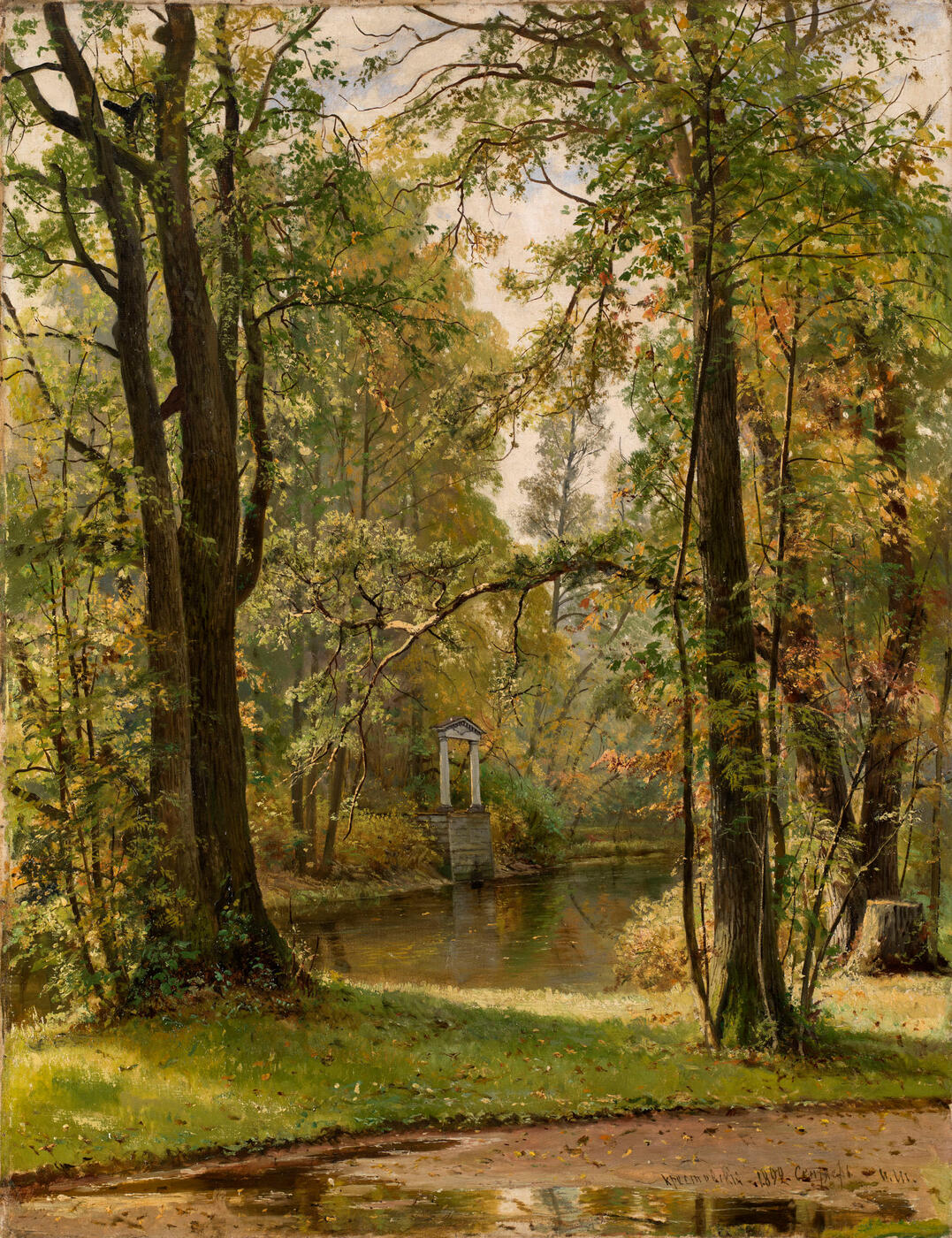3 June 2015 Russian Art Auctions
3 June 2015

11. SHISHKIN, IVAN (1832-1898)
Autumn on Krestovsky Island, signed with initials, inscribed "Krestovskii" and dated "1892 Sentiabr'".
Oil on canvas, 110 by 84.5 cm.
600,000-900,000 GBP
Authenticity certificate from the expert V. Petrov.
Authenticity of the work has been confirmed by the expert N. Ignatova.
Exhibited: Possibly, Personalnaya vystavka etiudov I. I. Shishkina, St Petersburg, 1892.
Ivan Shishkin created Autumn on Krestovsky Island during one of his annual painting trips through the environs of St Petersburg. It was a time when the painter had already achieved fame all across Russia, and the sheer mastery of his work secured him a leading place among the great landscapists. In 1891, a year before he painted this canvas, the artist had organised a one-man exhibition entitled Studies, Drawings, Etchings and Lithographs from the Period 1849–1891, setting before the St Petersburg public more than 500 superb works.
The works on show were vivid evidence of Shishkin’s “artistic laboratory”, revealing the principle on which his work was always based: a meticulous study of nature. It is as though his brush or the point of his pencil could feel the pulse of nature, masterfully reproducing her creations, whatever they might be – dry bark peeling off a tree, soft moss or ebullient clusters of ground-elder blossom, – evoking at the same time the particular tarry scent of the forest, the coolness of its morning or the freshness of its air in the evening. Shishkin was a true lover and connoisseur of the woodland and knew the anatomy of the various species of trees and plants to perfection. Pavel Tretyakov went so far as to call him Tsar of the Woods. Contemporaries said that Shishkin was “a milestone in the development of Russian landscape, a man and also a school – but a living school”.
The artist himself, when still very young, had written in his diary: “Nature is the only book, which can teach us about art”. A few decades later he would occupy a secure and very special place in Russian landscape painting. Art critics would recognise him as a great master, unequalled “among Russian painters of vegetation in nature”. He would be seen as “conscientious and sensible” and a “powerful and genuine master of his craft, for whom there are no technical obstacles to expressing whatever subtleties he observes in nature. For Shishkin, there is now no subject matter beyond the realm of nature, and nature remains his only paradigm for consistent study in the inexhaustible stream of his creative effort”, as was observed in a review for the V Itinerant Exhibition in 1877.
Throughout his life, Shishkin’s favourite theme was the majestic world of the forest with its overgrown thickets, mossy soil and thick vegetation, the mighty foliage of the wide-reaching oaks and the needle-fingered boughs of the firs and pines. In Shishkin’s late creative period, however – towards the end of the 1880s and the 1890s – his canvasses take on an ever more lyrical quality, the sense of being drawn, in the artist’s own words, towards a “warm, lively dialogue of the soul with nature and God”. It becomes more interesting for him to paint old parks, tranquil ponds of frozen water or neglected mills on streams in the forest, in short – subjects that exude a feeling of peace, quietness and elegiac pensiveness.
In Autumn on Krestovsky Island it is as though the artist has come across the avenue in the morning sunlight by accident while walking in the park. There is a certain sadness and melancholy about the mood evoked by the warmth of summer slipping away and the coolness of autumn days about to come, the earth sodden by recent rain and the yellow fallen leaves. The branches of the oaks form an arch through which can be seen a quiet pool and beside it an abandoned bower, keeping silent witness to secret conversations and musings in solitude. Here, as much as in any other of his works, Shishkin succeeds in conveying the intimacy of nature in Russia, her resonance with deeply felt human emotions: a sense of peace as well as trepidation, a slight sadness together with warm recollections of the past.
Notes on symbols:
* Indicates 5% Import Duty Charge applies.
Ω Indicates 20% Import Duty Charge applies.
§ Indicates Artist's Resale Right applies.
† Indicates Standard VAT scheme applies, and the rate of 20% VAT will be charged on both hammer price and premium.